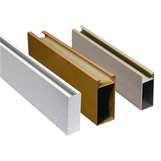Hey there! I'm a supplier of 6061 T6 Aluminum Sheet, and I often get asked about the maximum temperature this awesome material can withstand. So, let's dive right into it.
First off, 6061 T6 aluminum sheet is a super popular choice in a whole bunch of industries. It's got a great combination of strength, corrosion resistance, and workability. You can find it in everything from aerospace parts to automotive components, and even in some fancy consumer products.
Now, when it comes to the maximum temperature, it's not a straightforward answer. The 6061 T6 aluminum sheet is heat-treated to achieve its T6 temper. This heat treatment gives it enhanced mechanical properties, but it also means that high temperatures can have an impact on those properties.
In general, the 6061 T6 aluminum sheet starts to lose its mechanical strength at temperatures above 300°F (150°C). As the temperature rises, the material's yield strength and hardness begin to decrease. At around 400°F (204°C), the loss of strength becomes more significant. This is because the heat causes the precipitation-hardening particles in the aluminum alloy to coarsen and lose their effectiveness in strengthening the material.
However, it's important to note that the actual maximum temperature the 6061 T6 aluminum sheet can withstand depends on a few factors. One of the key factors is the duration of exposure to high temperatures. If the aluminum sheet is only exposed to high temperatures for a short period, it can tolerate a higher temperature than if it's exposed for a long time.
For example, if you're using the 6061 T6 aluminum sheet in a manufacturing process where it's briefly heated to a high temperature during a forming operation, it might be able to handle temperatures up to 500°F (260°C) without significant damage. But if it's going to be in a high-temperature environment continuously, you'll want to keep the temperature well below 400°F (204°C) to maintain its mechanical properties.
Another factor that affects the maximum temperature tolerance is the specific application and the required mechanical properties. In some applications, a slight reduction in strength might be acceptable, while in others, like aerospace or high-stress structural components, maintaining the full strength of the aluminum sheet is crucial.
Let's take a look at some real-world examples. In the automotive industry, 6061 T6 aluminum sheet is often used in engine components. These components are exposed to high temperatures, but they're designed to handle the heat for short periods. The engine might reach temperatures of around 350°F (177°C) during normal operation, and the 6061 T6 aluminum sheet can handle this without any major issues.
On the other hand, in a heat exchanger application, where the aluminum sheet is constantly exposed to hot fluids, the temperature needs to be carefully controlled. If the fluid temperature exceeds 400°F (204°C), the 6061 T6 aluminum sheet might start to experience a significant loss of strength over time, which could lead to failure of the heat exchanger.


Now, if you're in the market for 6061 T6 aluminum sheet, you can check out our Aluminium 6061 T6 Plate and 6061 T6 Aluminum Sheet products. We offer high-quality 6061 T6 aluminum sheets in a variety of sizes and thicknesses to meet your specific needs.
If you have any questions about the maximum temperature the 6061 T6 aluminum sheet can withstand for your particular application, or if you want to discuss your requirements in more detail, feel free to reach out. We're here to help you make the right choice and ensure that our products perform well in your projects.
In conclusion, the maximum temperature that 6061 T6 aluminum sheet can withstand is around 300 - 400°F (150 - 204°C) for long-term exposure, but it can handle higher temperatures for short periods. It's always a good idea to consult with a materials expert or us, the supplier, to determine the best temperature limits for your specific application.
References:
- "Aluminum Alloys: A Technical Guide" by ASM International
- "The Properties and Applications of Aluminum and Its Alloys" by Aluminum Association




